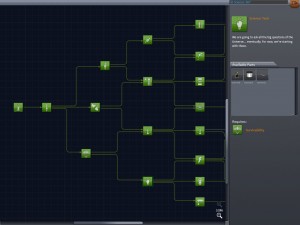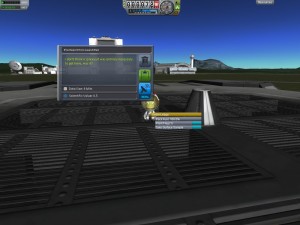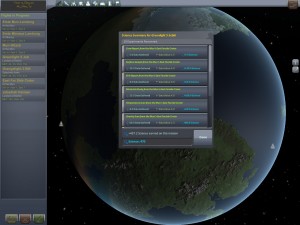Creative thinking with space goo!
During my ongoing literature review I often discover interesting facts about things I’ve never thought about. Sometimes I can connect these facts with my own observations: The result is mostly a completely new idea why things are as they are. Maybe these ideas are new to you, too. Therefore I’ll share my new science based knowledge with you!
This week: This time, I cover the new gameplay elements of Kerbal Space Program added to the game this week. Now players are able to do science and unlock new technologies.
As I was writing this week’s article, Squad, the developers of Kerbal Space Program[1] (KSP), announced the release of a huge game update on october 16th. Version 0.22 added one major feature to the gameplay of KSP: science! I’ve already mentioned a lot how educative the space simulation is[2], so I decided to postpone my planned article this week and do a short coverage over the newest version of the game instead.
Kerbal Space Program isn’t just a sandbox game anymore. The new version of the game added the option to decide between two modes: sandbox and career. The sandbox mode works as before and is mostly unchanged. The career mode however relies mainly on the second new feature I’ve already mentioned: science!
In career mode, the player starts with only a few rocket parts available and thus can only assemble simple space crafts. To unlock all the other parts, the player has to do some science, earn science points and finally spend these points in a tech-tree. This is also helpful for new players of the game, because they aren’t overwhelmed by the huge amount of different rocket parts anymore. Now, new players gain new parts as their skill level, experience and knowledge rise.
Doing science is pretty simple compared to Take on Mars[3][4]. At the beginning, the player can only give some orders to their astronauts to do some reports. This can be done while sitting in the capsule or during an extra-vehicular activity (EVA). These reports are rewarded with some science points when they are transmitted back to the space center or when the astronaut returns back home to the planets surface. Over time, the player unlocks additional science tools that allow to do different experiments. The results are also rewarded with science points when they’re transmitted to the space center or brought back to the planets surface.
Transmitting data isn’t as good as returning home from space with these scientific results. The player has to face a loss of data (and thus science points) if the results are just transmitted back home. However, this can be still useful, if the player needs the science points or the space craft is somewhere stuck and can’t return anymore.
Even if doing science isn’t more than just pressing a button, it still has educative and creative aspects. The solar system now consists of several different biomes. Each biome has different conditions and thus each experiment can have different results. After doing an experiment in low Kerbin orbit, the player can start to think about what will happen, if the experiment is done in a high Kerbin orbit. What if the experiment is done on another celestial body? What if … ?
Suddenly the player starts thinking creatively almost like a real researcher: „What will happen if I … ?“
To wrap things up, the science and tech-tree update has added some goals to the game. Each game is still unique because the approaches of building a spacecraft are endless, but new players now have some aims and can try to achieve them without feeling lost in the humongous world and vastness of space.
The combination of science and different biomes allows players to think in a creative way and to ask some „research questions“. This is also supported by the openess of the game. There aren’t missions like „Land on the Mun and bring a surface sample back home“. Instead, players have to define these missions themselves and finally try to achieve them (and thus learn about space exploration in this process).


